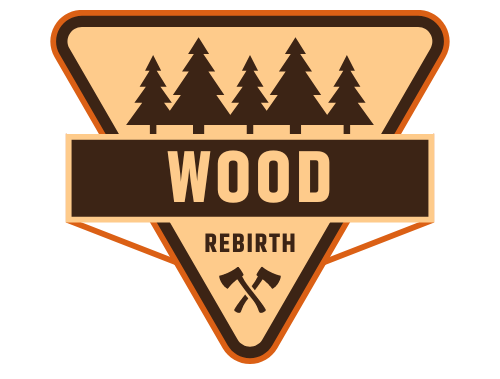Have you ever wondered what happens to all the waste wood that accumulates from construction sites and manufacturing processes? Well, you’re in for a treat as we explore the fascinating world of waste wood recycling. From turning discarded timber into renewable energy sources to creating beautiful furniture out of reclaimed wood, there’s no shortage of creative and sustainable solutions for dealing with this abundant resource. So, buckle up and join us on this eco-friendly journey as we uncover the many innovative ways waste wood is being put to good use.
Recycling
Wood Chip Production
When it comes to waste wood, one of the main ways it can be recycled is through wood chip production. Waste wood is processed into small chips or shreds, which can then be used for various purposes. Wood chips are commonly used as a fuel source for biomass boilers, as well as in the production of composite wood products, mulch, and biofuel.
Composite Wood Products
Another way waste wood can be recycled is through the production of composite wood products. This involves combining waste wood with other materials, such as adhesives or resins, to create new products. Common composite wood products include plywood, particleboard, and engineered wood. By recycling waste wood into composite wood products, we can reduce the demand for new timber, saving trees and minimizing the environmental impact of wood production.
Wood Mulching
Wood mulching is yet another way to recycle waste wood. Waste wood is shredded into small pieces and used as mulch in gardening and landscaping. Wood mulch helps to retain moisture in the soil, suppress weed growth, and regulate soil temperature. Additionally, wood mulch breaks down slowly, providing nutrients to the plants over time. By recycling waste wood into mulch, we not only reduce landfill waste but also enhance the health and productivity of our gardens and landscapes.
Biofuel Production
Waste wood can also be turned into biofuel. Through a process known as pyrolysis, waste wood is heated in the absence of oxygen, breaking it down into a mixture of gases, liquids, and solids. These byproducts can then be refined to produce biofuels, such as ethanol or biodiesel. Biofuels derived from waste wood are considered renewable and can be used as an alternative to fossil fuels in transportation and energy production. By transforming waste wood into biofuel, we can reduce our dependence on non-renewable resources and decrease greenhouse gas emissions.
Conversion into Biomass
Power Generation
One of the key uses for waste wood is in power generation. Waste wood is typically burned in biomass boilers to produce steam or hot water, which is then used to generate electricity. The combustion of waste wood releases heat energy, which is converted into electrical power through steam turbines. Power generated from waste wood is considered renewable and can contribute to reducing our reliance on fossil fuels. By utilizing waste wood for power generation, we can not only produce clean and sustainable energy but also divert waste from landfills.
Heat Production
In addition to power generation, waste wood can also be used for heat production. Biomass boilers can be used to generate heat for commercial and residential buildings. Instead of using fossil fuels like oil or gas, waste wood is burned to produce hot water or steam, which is then circulated through a heating system. This provides a renewable and carbon-neutral heat source, reducing greenhouse gas emissions and promoting sustainable heating solutions.
Renewable Energy
The conversion of waste wood into biomass for power and heat production contributes to the generation of renewable energy. By utilizing this sustainable energy source, we can reduce our reliance on finite fossil fuels and decrease our carbon footprint. Renewable energy from waste wood helps in mitigating climate change and promoting a greener future for generations to come.
Cogeneration
Cogeneration, also known as combined heat and power (CHP), is another way to utilize waste wood for energy production. Cogeneration systems simultaneously generate electricity and useful heat from waste wood. The heat produced during the electricity generation process is captured and used for various heating purposes, such as space heating or water heating. This co-production of electricity and heat maximizes the energy efficiency of waste wood and provides an environmentally friendly solution for meeting both electrical and thermal energy needs.
Reprocessing for Reuse
Reclaimed Lumber
Waste wood can be reprocessed and transformed into reclaimed lumber. Reclaimed lumber refers to wood that has been salvaged from old buildings, furniture, or other wooden structures. This reclaimed wood can be processed, cleaned, and restored to its original quality, making it suitable for various construction and woodworking projects. Using reclaimed lumber not only reduces the demand for new timber but also captures the history and character of the salvaged wood, adding an element of uniqueness and sustainability to any project.
Furniture Production
Reprocessing waste wood for furniture production is another way to reuse this valuable resource. Waste wood, such as discarded timber or pallets, can be reimagined and repurposed into stunning pieces of furniture. This process not only reduces waste but also gives a second life to the wood, creating beautifully crafted and sustainable furniture. Whether it’s a unique coffee table, a stylish chair, or a custom-designed shelf, furniture made from waste wood brings a sense of eco-consciousness and creativity to your home or office.
Crafts and DIY Projects
Woodworking enthusiasts and DIY enthusiasts can also benefit from reprocessing waste wood for crafts and DIY projects. With some creativity and basic woodworking skills, waste wood can be transformed into a wide range of useful and decorative items. From picture frames and candle holders to birdhouses and planters, the possibilities are endless. Repurposing waste wood for crafts and DIY projects is not only a fun and rewarding activity but also a sustainable way to reduce waste and create something unique and personalized.
Wooden Packaging Materials
Waste wood can be repurposed into packaging materials, offering a sustainable alternative to traditional packaging solutions. By shredding or chipping waste wood, it can be transformed into protective padding, shipping pallets, or even wooden crates. These wooden packaging materials provide strength, durability, and environmental benefits. They can be reused, recycled, or easily decomposed, minimizing waste generation and promoting a greener approach to packaging.

Landfill Disposal
Wood Waste Management
While recycling and reprocessing waste wood is essential, proper wood waste management includes the disposal of wood that cannot be recycled or reused. Landfill disposal becomes necessary for waste wood that is contaminated, treated with chemicals, or heavily damaged. However, it is crucial to ensure responsible disposal to minimize the environmental impact. Wood waste should be segregated from other types of waste, and efforts should be made to divert as much wood as possible from landfills through recycling and reprocessing initiatives.
Environmental Concerns
Wood waste in landfills can raise environmental concerns. As wood decomposes, it produces methane, a potent greenhouse gas. Methane contributes to climate change and air pollution. Moreover, the space occupied by wood waste in landfills detracts from available landfill capacity for other waste materials. To mitigate these concerns, it is crucial to prioritize recycling and reprocessing options for waste wood, minimizing its presence in landfills and reducing the environmental impact associated with its decomposition.
Landfill Space Usage
Proper wood waste management also involves considering the limited space available in landfills. By diverting waste wood from landfills through recycling and reusing efforts, we can help extend the lifespan of landfills and preserve valuable landfill space for non-recyclable materials. Reducing wood waste in landfills also reduces transportation and disposal costs and saves energy associated with waste management processes. By being mindful of our wood waste and actively seeking sustainable alternatives, we can make a positive impact on both the environment and our waste management infrastructure.
Alternative Building Materials
Waste Wood Bricks
One innovative way to utilize waste wood is by transforming it into waste wood bricks. These bricks are made by compressing shredded waste wood with adhesives or resins. Waste wood bricks can be used as an alternative to traditional bricks or concrete blocks in construction projects. They are lightweight, durable, and provide excellent insulating properties. By using waste wood bricks, we can reduce the demand for traditional building materials and promote a more sustainable and eco-friendly approach to construction.
Wood Concrete Composites
Combining waste wood fibers with concrete creates a sustainable building material known as wood concrete composite. This composite material offers the strength and durability of traditional concrete while reducing its environmental impact. Wood concrete composites can be used for various construction applications, such as flooring, wall panels, and structural elements. By incorporating waste wood into concrete, we can reduce the carbon footprint of construction projects and promote the use of renewable resources.
Timber-based Insulation Materials
Waste wood can also be transformed into insulation materials for buildings. By processing waste wood into fibers or particles, it can be used as a natural and renewable insulation material. Timber-based insulation offers excellent thermal and acoustic properties, helping to reduce energy consumption and noise pollution in buildings. Moreover, it is biodegradable and recyclable, making it a sustainable alternative to synthetic insulation materials. By utilizing waste wood for insulation, we can improve energy efficiency in buildings and contribute to a greener and more comfortable living environment.
Wooden Panel Boards
Wood panel boards are another alternative building material that can be produced from waste wood. Waste wood fibers or particles are combined with adhesives to produce wooden panels with various sizes and thicknesses. These panels can be used for walls, ceilings, furniture, and other interior applications. With their natural beauty and sustainability, wooden panel boards offer a renewable and eco-friendly option for interior design and construction projects. By utilizing waste wood for panel boards, we reduce waste and promote the use of renewable resources in the building industry.
Charcoal Production
Activated Charcoal
Waste wood can be converted into activated charcoal, which has a wide range of applications. Activated charcoal is created through a high-temperature process that removes impurities from waste wood, leaving behind a porous carbon material. Activated charcoal is commonly used in water and air purification systems, as well as in medical and cosmetic products. By producing activated charcoal from waste wood, we can harness its adsorption properties and find sustainable solutions for various industries.
Blacksmithing and Forging
Waste wood can be transformed into charcoal for blacksmithing and forging. Charcoal is a clean-burning and efficient fuel source that has been used for centuries in metalworking. By heating waste wood in the absence of oxygen, it can be converted into charcoal, which provides the necessary heat for blacksmithing and forging operations. Utilizing waste wood as charcoal not only reduces waste but also supports traditional crafts and promotes sustainable practices in the metalworking industry.
Barbecue and Cooking
Charcoal made from waste wood can also be used for barbecue and cooking purposes. Whether grilling in your backyard or enjoying a campfire, using waste wood charcoal provides a sustainable and flavorful alternative to traditional charcoal briquettes. Waste wood charcoal offers a natural smoky flavor and burns evenly, making it an ideal choice for outdoor cooking enthusiasts. By utilizing waste wood charcoal, you can enjoy delicious meals while reducing waste and embracing an eco-friendly approach to outdoor cooking.
Mulch and Composting
Garden and Landscaping
Wood waste can be transformed into mulch for garden and landscaping purposes. By shredding or chipping waste wood, it can be used as mulch around plants, trees, and shrubs. Wood mulch helps to retain soil moisture, regulate soil temperature, suppress weed growth, and protect against erosion. Additionally, as wood mulch decomposes over time, it enriches the soil with organic matter, promoting healthy plant growth. By using waste wood mulch, you can enhance the aesthetics and productivity of your garden while reducing waste.
Soil Improvement
In addition to mulch, waste wood can also be composted to enrich the soil. Composting is the process of decomposing organic materials, such as food scraps and yard waste, into nutrient-rich humus. Waste wood, when shredded or chipped, can be added to compost piles or bins to enhance the decomposition process. Wood waste provides carbon-rich material in the compost, balancing the nitrogen-rich components. Composting waste wood not only reduces waste but also produces high-quality compost that nourishes plants and improves soil structure.
Erosion Control
Utilizing waste wood for erosion control is another important application. When placed strategically in areas prone to erosion, such as slopes or bare ground, waste wood can help stabilize the soil and prevent erosion from water or wind. Large logs, branches, or wood chips can be used as natural barriers or erosion control measures. By using waste wood for erosion control, we can protect our landscapes, prevent soil loss, and create more stable and sustainable environments.
Organic Waste Management
Mulching and composting waste wood contribute to organic waste management. By diverting wood waste from landfills and incorporating it into mulch or compost, we can minimize the environmental impact of waste decomposition and reduce methane emissions. Organic waste management through waste wood utilization helps in maintaining a healthy balance in ecosystems, promoting nutrient cycling, and conserving landfill space for non-organic waste materials.
Animal Bedding
Livestock and Poultry
Waste wood can be repurposed into animal bedding for livestock and poultry. By chipping or shredding waste wood into wood shavings, it becomes a suitable bedding material for barns, stables, and poultry houses. Wood shavings provide comfortable and absorbent bedding that helps keep animals dry and reduces odors. Additionally, waste wood bedding can be repurposed into compost after use, completing the cycle of sustainability. By utilizing waste wood as animal bedding, we can provide a healthier and more sustainable living environment for our livestock and poultry.
Equine and Pet Bedding
Equine and pet owners can also benefit from waste wood bedding. Shredded waste wood can be used as bedding for horses, dogs, cats, and other domestic animals. Just like livestock and poultry bedding, shredded waste wood provides comfort, absorbency, and odor control for our beloved pets. By using waste wood bedding, we promote animal welfare, minimize waste, and reduce the environmental impact of traditional bedding options.
Eco-friendly Bedding Options
Using waste wood as animal bedding offers eco-friendly options compared to alternatives such as straw or hay. Waste wood bedding is a renewable resource that can be produced from waste materials, reducing the demand for virgin materials. Moreover, waste wood bedding can be composted after use, contributing to organic waste management and nutrient recycling. By choosing eco-friendly bedding options, we prioritize sustainability, animal comfort, and environmental stewardship.
Natural Absorbency
Waste wood bedding provides excellent absorbency, making it an ideal bedding material for animals. The absorbent nature of wood shavings or chips helps soak up moisture, keeping animal bedding drier, cleaner, and odor-free. The natural properties of waste wood make it a practical choice for animal bedding, promoting hygiene, comfort, and overall health for our animals.
Wood Chip Biomass Boilers
Energy Efficient Heating
Wood chip biomass boilers offer a highly efficient method of heating buildings using waste wood. These boilers utilize wood chips as a renewable fuel source to produce heat for commercial, industrial, and residential applications. Wood chips are fed into the boiler, where they are burned to generate hot water or steam, which is then distributed throughout the building. Wood chip biomass boilers provide efficient and cost-effective heating solutions while reducing greenhouse gas emissions and reliance on traditional fossil fuels.
Renewable Heat Incentive
Wood chip biomass boilers are eligible for the Renewable Heat Incentive (RHI) program in many countries. The RHI program provides financial incentives to promote the use of renewable heat sources and reduce carbon emissions. By installing and using wood chip biomass boilers, building owners can receive financial support for the renewable heat generated. This incentive encourages the adoption of sustainable and eco-friendly heating solutions, further driving the demand for waste wood as a fuel source.
Carbon Neutral Heat Source
Utilizing wood chip biomass boilers as a heat source offers a carbon-neutral alternative to traditional heating systems. When waste wood is burned in these boilers, it releases carbon dioxide (CO2), which is subsequently absorbed by growing trees through photosynthesis. This carbon cycling process makes wood chip biomass boilers a carbon-neutral heating option. By using waste wood for heat production, we can reduce our carbon footprint and contribute to a more sustainable and environmentally friendly future.
Art and Sculpture
Wood Carvings
Waste wood can be transformed into beautiful wood carvings. Through the skillful hands of artisans and craftsmen, waste wood can be intricately carved into sculptures, figurines, and decorative objects. Wood carvings made from waste wood not only showcase the natural beauty and grains of the wood but also serve as a visual representation of sustainable art. By appreciating wood carvings made from waste wood, we acknowledge the artistic value of recycling and promote the creative use of available resources.
Wood Sculptures
The versatility of waste wood extends to creating stunning wood sculptures. By combining different pieces and shapes of waste wood, artists can sculpt unique and expressive artworks. Whether it’s a free-standing sculpture or a relief carving, wood sculptures made from waste wood add a touch of elegance and environmental consciousness to any space. By supporting wood sculptures made from waste wood, we encourage sustainable artistry and foster a deeper appreciation for the beauty found in reclaimed materials.
Wooden Art Installations
Waste wood can also be used to create large-scale art installations. By repurposing waste wood into architectural elements or sculptural forms, artists can transform spaces and engage viewers in profound ways. Wooden art installations made from waste wood not only captivate the imagination but also convey powerful messages about sustainability, waste reduction, and the beauty of repurposing. By celebrating wooden art installations, we recognize the creative potential of waste wood and inspire others to embrace sustainability in their artistic pursuits.
Woodworking Crafts
Waste wood serves as a valuable resource for woodworking crafts. From functional items like cutting boards, bowls, and utensils to decorative items like picture frames, jewelry boxes, and clocks, waste wood can be transformed into a wide range of unique and handcrafted creations. Woodworking crafts made from waste wood embody the principles of sustainability and showcase the artisan’s skill and creativity. By supporting woodworking crafts made from waste wood, we encourage sustainable craftsmanship and appreciate the beauty of reclaimed materials.
In conclusion, waste wood is a valuable resource that can be recycled, reprocessed, and repurposed in numerous ways. Whether it’s through wood chip production, composite wood products, or biofuel production, waste wood can be transformed into useful and sustainable materials. Additionally, waste wood can be converted into biomass for power generation, heat production, and renewable energy. Reprocessing waste wood allows for its reuse in reclaimed lumber, furniture production, crafts, and DIY projects, as well as wooden packaging materials. Landfill disposal should be minimized by managing wood waste effectively and considering environmental concerns and landfill space usage. Alternative building materials like waste wood bricks, wood concrete composites, and timber-based insulation provide sustainable options in the construction industry. Charcoal production from waste wood offers activated charcoal for various applications, as well as fuel for blacksmithing and outdoor cooking. Mulch and composting from waste wood contribute to garden and landscaping, soil improvement, erosion control, and organic waste management. Waste wood also finds usage as animal bedding, providing comfort and absorbency for livestock, pets, and promoting eco-friendly options. Wood chip biomass boilers ensure energy-efficient heating, qualify for renewable heat incentives, and act as a carbon-neutral heat source. Finally, waste wood in the field of art and sculpture inspires creativity through wood carvings, sculptures, art installations, and woodworking crafts. By utilizing waste wood in these diverse ways, we not only reduce waste and minimize the environmental impact but also harness the inherent value and sustainability of this versatile material.

Hi, I’m James Gheen, the creator behindWoodRebirth.com. As someone passionate about sustainability and environmental stewardship, I created this pioneering online platform to change how we approach wood waste and pallet disposal. Through detailed recycling and disposal guides, creative DIY projects, and upcycling inspirations, I aim to inspire individuals and businesses to adopt eco-friendly practices in their wood waste management. At WoodRebirth.com, we foster a vibrant community focused on education and engagement, encouraging the sharing of ideas and success stories. Join me in our mission to give wood waste a new lease on life, making a tangible impact on our environment, one pallet at a time.

